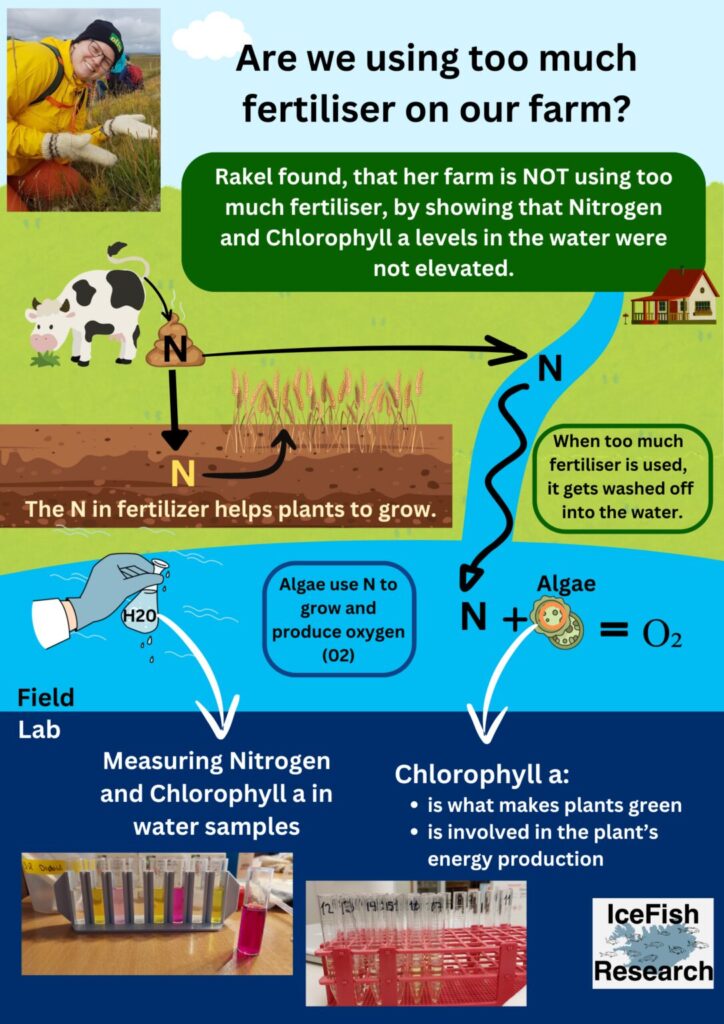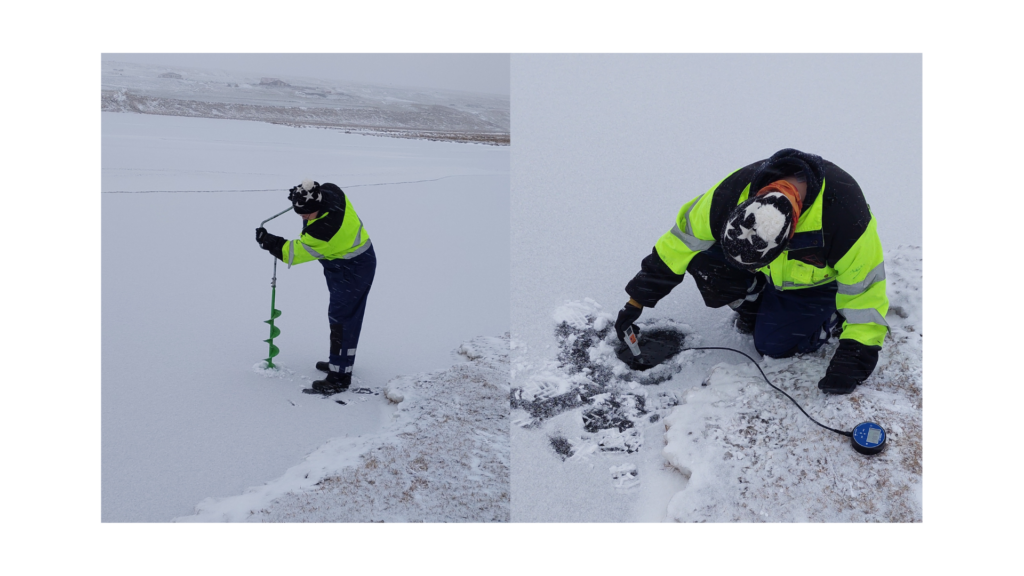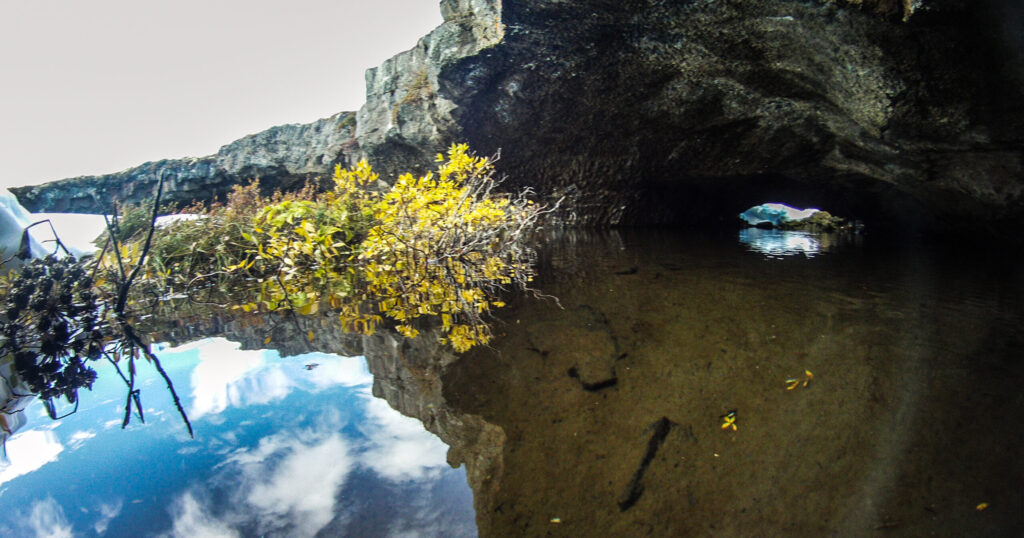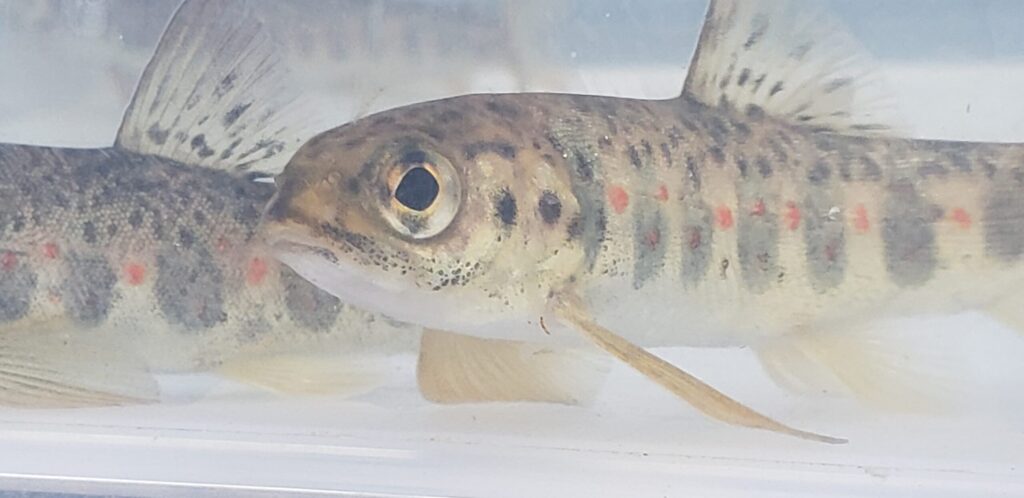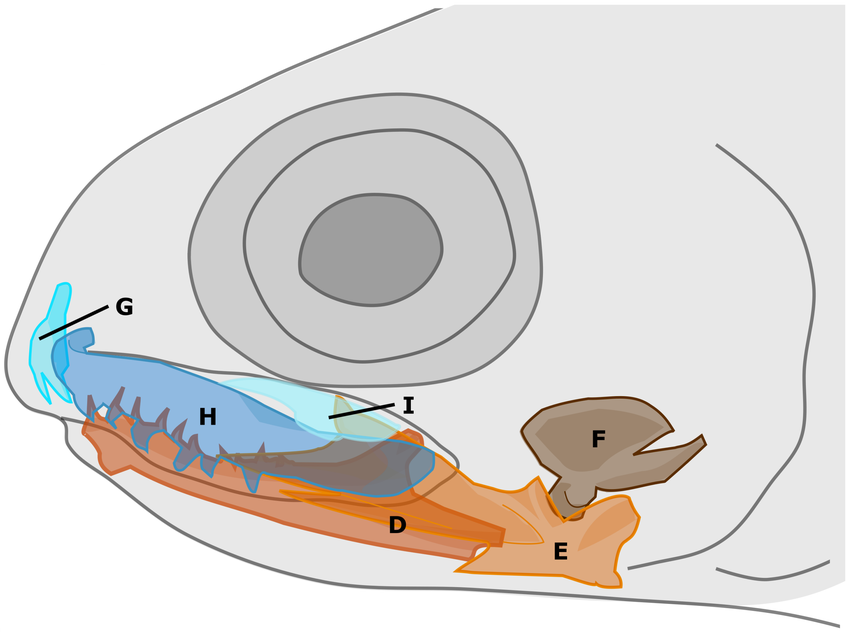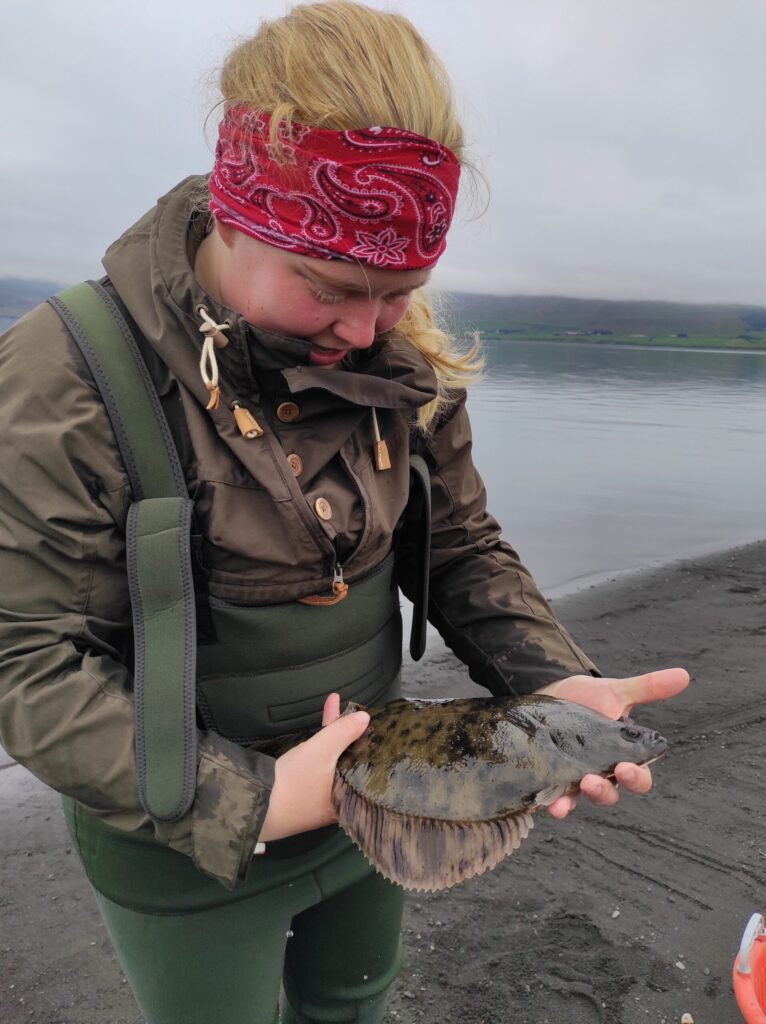In the picture above Rakel is drilling a hole in the ice covering lake Garðsvatn in winter time. She collected a water sample and took basic measurements like temperature.
Rakel Þorbjörnsdóttir is a curious and bubbly person that I have had the pleasure of working with throughout my PhD. Her curiosity and boundless energy lead her to pursue a Bachelor in natural and environmental sciences at the Agricultural University of Iceland, whilst still working as a technician at the department for Aquaculture and Fish Biology of Hólar University. When it came to choosing a topic for her bachelor’s thesis, she found inspiration right outside her house door.
Rakel lives on the dairy farm Litli-garður on the Hegranes peninsula in Skagafjörður. Lake Garðsvatn is part of the farm and is fed by a glacial river and flows directly into the ocean. Rakel was curious to find out if the fertiliser used on her farm had an effect on the lake ecosystem. With her supervisor Björn Þorsteinsson, Rakel developed her Bachelor project to test “The effect of nitrogen (N) in field runoff water on algal blooms in Lake Garðsvatn”.
Animal poop is high in nitrogen, which is used by plants to grow. That is why farmers spread animal poop on their fields, to increase plant growth. But when farmers use too much poop to fertilise their fields, the fertiliser can be washed away into the nearby water, where it can be used by algae to grow. Algae use nitrogen to grow and produce oxygen (O2), which can be used by bacteria to grow. When bacteria grow too much, they can use up all the oxygen in the water, leaving too little for other animals, like fish, to breathe. That is how the use of too much fertiliser can cause fish to die.
Rakel tested if the fertiliser used on her farm is being washed off into the water and used by algae to grow. Chlorophyll a is what makes plants green and can be used to measure how much algae are present. Rakel collected regular water samples from the little river crossing the farm fields into the lake and the lake itself across seasons for a whole year. In the lab she then measured the amount of Chlorophyll a and nitrogen in each sample. Finally, she used statistical tests to see if the amount of fertiliser used correlated with the amount of nitrogen in the water and the Chlorophyll a found in algae.
The results showed that there was no connection between the amount of fertiliser spread on the fields on nitrogen or Chlorophyll a, which means that Rakel’s farm was not using too much fertiliser. Future projects could involve looking at the composition of different kinds of fertilisers and expand the study to include multiple farms and lakes. This could be a great tool for farmers to improve their use of fertiliser on their fields, whilst protecting the surrounding water systems.
